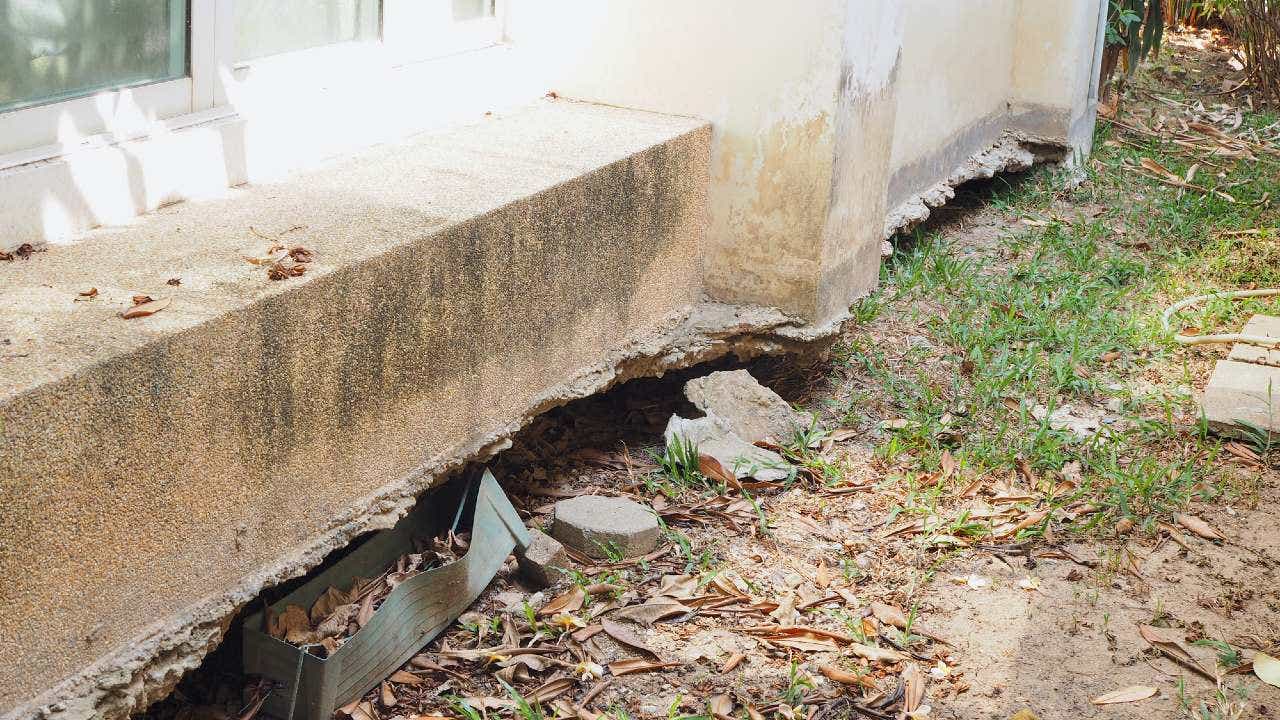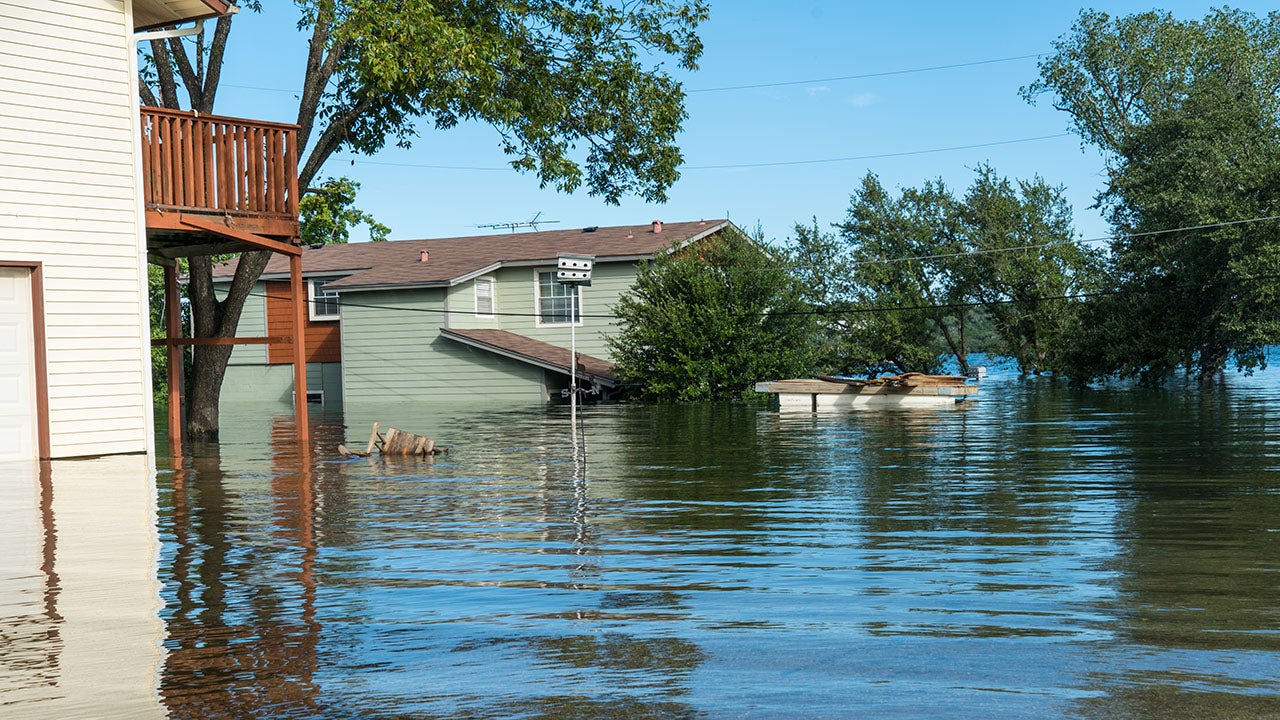Does homeowners insurance cover foundation repair?




Key takeaways
- Home insurance typically covers foundation issues caused by covered perils, such as fire and severe weather events like hurricanes and tornadoes.
- Exclusions to coverage may include wear and tear, neglect, faulty construction and settling or expansion of soil.
- It is important for homeowners to maintain their soil and grading and address any cracks or warning signs of foundation damage promptly.
- Standard home insurance policies do not cover foundation damage caused by floods or earthquakes, which may require separate insurance policies.
Foundation issues — whether due to damage over time or perils — are bad news for homeowners. They typically mean costly repairs and in some instances, the value of your home could decline. That said, your homeowners policy could kick in to cover the damage unless it’s caused by an excluded peril. Be sure to review your home insurance policy to understand what’s covered and what isn’t so you’ll be prepared should your foundation become faulty and put the safety of your home and its occupants at risk.
Does home insurance cover foundation repair?
Foundation damage is covered by your home insurance policy if it results from a covered peril. However, you’ll likely have to come out of pocket if the damage results from neglect, wear and tear, faulty construction, settling, insects or other excluded perils.Review your policy to clarify what’s covered and what isn’t, as it depends on your provider, coverage levels, policy exclusions and the proximate cause of the damage. The type of homeowners insurance you carry could also determine how much of the damage —if any —is covered.
Proximate cause is an insurance term that refers to an event that causes an insured loss. Some losses are straightforward, like a fire destroying a part of your home, but it isn’t always that simple. For example, damage from falling objects is a standard peril covered by home insurance. However, a tree that falls on your home from strong wind is likely covered, but a tree falling on your home due to termite damage probably isn’t. This is because the proximate cause of wind is a covered peril, whereas the proximate cause of termites is normally excluded.
What foundation issues does home insurance cover?
Standard home insurance policies include dwelling coverage, which is the portion of your policy that covers the physical structure of your home, attached structures and your foundation. HO-3 and HO-5 insurance policies (the most common types of coverage) provide dwelling coverage on an open perils basis, which means any loss that is not explicitly excluded from your policy is covered.
In most cases, foundation repair is covered by insurance when the damage is caused by the following perils:
- Fire or excessive smoke
- Hail
- Windstorms and tornadoes
- A vehicle or aircraft
- Vandalism
- Falling objects
- Water damage that results from an overflow in your A/C, heating or plumbing system or ruptured pipe
- Explosions
Reading through your policy is important to determine which perils are included in your insurance policy and how much you’re required to pay out of pocket. Depending on where you live, you may have a percentage-based windstorm or windstorm/hail deductible or a standalone windstorm insurance policy. In some places, foundation repair is not covered by insurance when the damage is caused by windstorms or wildfires. This is more common in areas prone to those types of catastrophic losses. Several Midwest, Atlantic and Gulf Coat states are prone to windstorm damage, and numerous Western states are prone to wildfire damage.
When does a standard home insurance policy not cover foundation damage?
Although home insurance does cover many sources of foundation damage, there are certain situations where coverage might be denied. For instance, some people assume that foundation damage is covered after any natural disaster. But that’s not the case.
In fact, almost all home policies specifically exclude two of the natural disasters that can do the most foundation damage: floods and earthquakes. If you live in an area where earthquakes or floods are common, speak with an agent to see if purchasing a separate earthquake or flood insurance policy would provide better financial protection for the investment you’ve made in your home.
If you’re seeking better coverage for high-risk events, you could consider a Difference in Conditions (DIC) policy which can fill in the gaps in your home insurance policy. For example, a DIC policy would cover foundation damage caused by landslides.
Most home insurance policies only provide coverage for “sudden and accidental loss” or “direct physical loss,” which is defined as damage caused by an accident or other unexpected event that is out of your control. Standard policy exclusions pertaining to foundation issues typically include:
- Wear and tear
- Neglect
- Faulty construction
- Birds, vermin, rodents, insects or animals kept by an insured party
- Settling, shrinking, bulging or expansion
Settling, shrinking, bulging or expansion
While some settling of a home is normal, especially if it is new construction, extreme settling, shrinking, bulging or expansion will cause your foundation to crack. Too much moisture can lead to soil expansion, putting pressure on your foundation, while too little moisture can cause soil shrinkage, which can lead to foundation settling or cracking. Routine home maintenance and landscaping can drastically reduce the likelihood of this happening, which is why insurers commonly deny foundation claims associated with this type of damage.
To maintain optimal moisture levels, consider watering your foundation during dry seasons and ensuring that your home has good drainage systems, such as gutters and downspouts, to keep water away from it. If you live in an area experiencing a drought, check with your local city officials on ways you can maintain your yard in accordance with mandated water restrictions.
Policy exclusions are listed in your home policy contract, which is typically about 20 to 30 pages. To locate exclusions related to your home’s foundation, check the policy index for Section I exclusions. Section I is the property coverage portion of your policy, whereas Section II pertains to personal liability. If you have a digital copy of your policy, do a simple keyword search for the word “foundation” to discover where your insurance specifically mentions how and if your foundation is covered from loss.
Common types of foundation issues
Here are some of the more common foundation issues to be on the lookout for:
- Poor drainage: If water begins to accumulate around the structure, it could be a sign of a drainage issue that’s damaging to the foundation.
- Gaps around windows: Spaces around windows or issues with sticking or latching are tell-tale signs of a shifting foundation.
- Ill-fitting doors or cabinets: If the doors of your home no longer fit as they should or if the cabinets detach from the wall, this could also be a sign that your home’s foundation is shifting.
- Sagging floors: Floors beginning to sag, slope or look uneven may be a sign of a shifting foundation.
What to do if you experience foundation damage
If your home’s foundation is damaged in a covered peril, you should get in touch with your insurer or agent as quickly as possible to file a claim. Here’s a step-by-by breakdown of how to move forward:
- Step 1: Snap photos. Be sure to collect photos and videos to document the damage when it’s safe to do so. You want to have these handy for the next step.
- Step 2: File a claim. Reach out to your insurance provider to inquire about the process to file a claim. Most have an online portal you can use to input additional information about the foundation damage and upload proof (i.e., photos, videos and any supporting documentation if applicable).
- Step 3: Speak with the adjuster. Upon receipt of the claim, the insurance company will assign a claims adjuster to your case. They will also send a field adjuster to your home in most cases to assess the damage and include their findings in an itemized report.
- Step 4: Shop around for repair quotes. If your property damage is covered, the next step is to do your homework to find a reputable contractor. Be sure to get quotes from at least three contractors to help you make an informed decision.
- Step 5: Select a contractor: Many insurance providers, including State Farm, USAA, Safeco, Farmers, Liberty Mutual and Amica, help simplify this process by providing you with a network of preferred contractors. And some even guarantee the work done for a set period of time when you choose one of their contractors.
- Step 5: Use the payout to complete repairs. The insurance company will send you a check in the mail to cover the repair costs minus your deductible.
How to prevent foundation damage
While catastrophic losses are unavoidable, there are ways to safeguard your foundation and reduce the risk of loss from preventable damage. Here are some tips for preventing homeowners foundation issues:
- Get a home inspection before moving in: Before buying your home, you should get a home inspection from a qualified inspector. The inspection should include a careful look at your foundation so you will have a better idea of any problems you might face after the sale (or whether you should back out of the deal).
- Maintain your soil: The soil near your home should be neither too wet nor too dry — both can strain the foundation. During drought-like conditions, it may be helpful to water the soil thoroughly with a hose.
- Check your grading: You want water to drain away from your home when it rains. Aim to have at least 6 inches of grading away from your house in the 10 feet surrounding it.
- Mind your trees: Any trees that are too close to your home should be cut down or moved to prevent the roots from putting stress on the foundation. A good general rule is to allow one foot of space for roots for each inch of trunk thickness. So a tree with a trunk that is 6 inches in diameter should be at least 6 feet away from your foundation.
- Clean your gutters: Clogged gutters can lead to water spilling over the edge and directly onto the soil surrounding your foundation. Keeping your gutters clear of leaves and debris can protect your foundation from moisture-related issues.
- Lay some mulch: Mulch can be used around your house to maintain the moisture level and temperature of the surrounding soil, minimizing pressure on your foundation. Note that wood mulch should be kept at least 6 inches from the foundation or perimeter of your home to prevent termite damage. Additionally, mulch should not be used around homes that are in high-risk wildfire areas, as it can easily ignite from airborne embers.
- Address cracks promptly: If you notice any cracks in your foundation, don’t wait to get a professional out to assess the severity of the issue. Acting fast can minimize the damage — and the cost of repairing it.
You can also be proactive and help minimize foundation damage by:
- Inspecting your home twice a year for damage
- Investing in a meter to measure moisture levels
- Refraining from watering your grass or soil until dawn or dusk
- Only watering for 30 minutes at a time
- Reaching out a professional right away if you spot any issues
Frequently asked questions
You may also like

Home insurance isn’t just more expensive, it’s also harder to get in 2025

Homeowners insurance exclusions

Does homeowners insurance cover trampolines?

Does homeowners insurance cover flooding?
